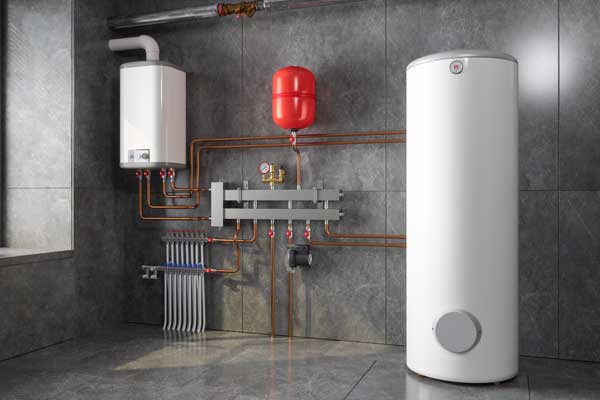Steps to Prolong the Lifespan of Your Home's Hot Water System By MaintenanceEasy Guide to Maintaining Your Home's Hot Water System
Steps to Prolong the Lifespan of Your Home's Hot Water System By MaintenanceEasy Guide to Maintaining Your Home's Hot Water System
Blog Article
The article in the next paragraphs involving How to Maintain a Hot Water Heater in a Few Simple Steps is especially captivating. Check it out for your own benefit and figure out what you think of it.

Warm water is essential for everyday convenience, whether it's for a refreshing shower or washing meals. To guarantee your hot water system runs successfully and lasts much longer, normal upkeep is key. This short article gives sensible suggestions and insights on just how to maintain your home's hot water system to prevent disruptions and expensive fixings.
Introduction
Preserving your home's warm water system might seem challenging, however with a couple of straightforward steps, you can ensure it runs efficiently for years to come. This guide covers whatever from comprehending your hot water system to do it yourself upkeep tips and understanding when to employ specialist help.
Importance of Maintaining Your Hot Water System
Routine maintenance not just expands the life-span of your hot water system but likewise ensures it runs efficiently. Overlooking upkeep can bring about reduced performance, greater power expenses, and also early failure of the system.
Indicators Your Hot Water System Requirements Maintenance
Understanding when your hot water system needs focus can protect against major problems. Watch out for indications such as irregular water temperature level, unusual sounds from the heating system, or corroded water.
Recognizing Your Warm Water System
Before diving into maintenance tasks, it's useful to understand the standard parts of your hot water system. Commonly, this consists of the hot water heater itself, pipelines, anode rods, and temperature controls.
Monthly Maintenance Tasks
Regular month-to-month checks can aid capture small problems prior to they intensify.
Flushing the Water Heater
Flushing your hot water heater eliminates debris build-up, enhancing effectiveness and prolonging its life.
Monitoring and Changing Anode Rods
Anode poles stop rust inside the storage tank. Evaluating and changing them when worn out is essential.
Inspecting and Readjusting Temperature Level Setups
Changing the temperature settings ensures optimum efficiency and safety and security.
Do It Yourself Tips for Maintenance
You can carry out several upkeep jobs yourself to maintain your warm water system in top condition.
Looking for Leakages
Frequently inspect pipes and links for leaks, as these can lead to water damages and higher costs.
Checking Pressure Alleviation Valves
Checking the pressure safety valve ensures it operates properly and avoids excessive stress buildup.
Shielding Pipelines
Protecting hot water pipes lowers warm loss and can save power.
When to Call a Professional
While do it yourself upkeep is useful, some issues need professional know-how.
Complicated Concerns Needing Professional Assistance
Instances include significant leakages, electrical troubles, or if your water heater is consistently underperforming.
Routine Specialist Maintenance Conveniences
Professional upkeep can consist of comprehensive assessments, tune-ups, and making certain conformity with security criteria.
Verdict
Routine upkeep of your home's warm water system is important for performance, longevity, and expense financial savings. By following these ideas and knowing when to look for professional assistance, you can make certain a dependable supply of hot water without unanticipated interruptions.
Water Heater Maintenance Tips
Test the TPR Valve
Shut off the power and the cold-water supply valve. Place a bucket under the pipe connected to the temperature-pressure-release (TPR) valve on the top or side of the tank. (This valve opens if the tank pressure gets too high.) Lift the valve’s tab to let some water out, then let go. If water keeps flowing, drain the tank partway, unscrew the old valve with a pipe wrench, and install a new one. Check the Anode Rod
Put a hose to the tank’s drain cock and let out a few gallons of water. Now fit a 1 1/16-inch socket onto the rod’s hex head on top of the heater (or under its top plate) and unscrew the rod. If it’s less than ½ inch thick or coated with calcium, buy a new one, wrap its threads with Teflon tape, put it back in the tank, and tighten securely. Use this segmented rod if headroom above the tank is limited. Drain the Tank and Wash Out Sediment
Drain the remaining water in the tank into the bucket, then stir up the sediment on the tank’s bottom by briefly opening the cold-water supply valve. Drain and repeat until clean water comes out of the hose. Close the drain cock, refill the tank, and turn its power back on. Adjust the Temperature
Find the temperature dial on the side of the tank and unscrew its cover. Adjust the dial to 120 degrees using a flathead screwdriver. For every 10 degrees the temperature is lowered, you can expect to save up to 5 percent in energy costs. Turn the water heater off or the thermostat down to its lowest setting if you plan to be away from home for more than three days. Insulate the Pipes
Buy some self-sticking 3/8-inch-thick foam pipe insulation that matches the pipes’ diameter. Slide the foam over the hot-and cold-water pipes as far as you can reach. Insulating the cold-water pipe prevents condensation in summer. Peel the tape and squeeze the insulation closed. If the pipe is 6 inches or less from the flue, cover it with 1-inch-thick unfaced fiberglass pipe wrap. https://www.thisoldhouse.com/plumbing/21016402/how-to-maintain-a-water-heater

As a devoted reader about Tips on Maintaining a Water Heater, I thought sharing that piece was worthwhile. Sharing is caring. You just don't know, you will be doing someone a favor. I cherish reading our article about What Kind of Maintenance Do Water Heaters Need?.
Click Here Report this page